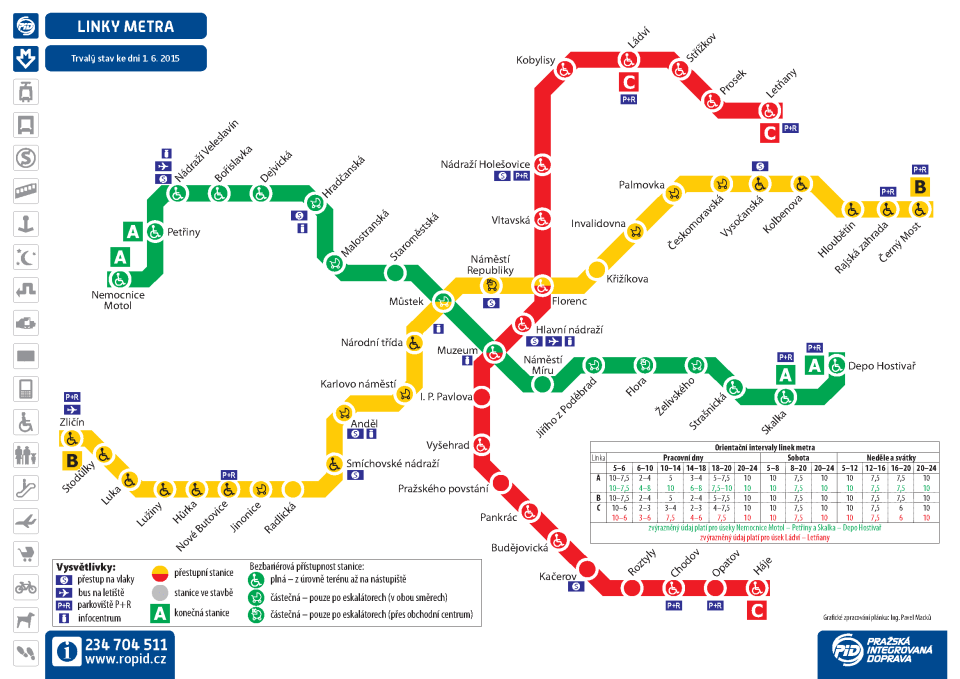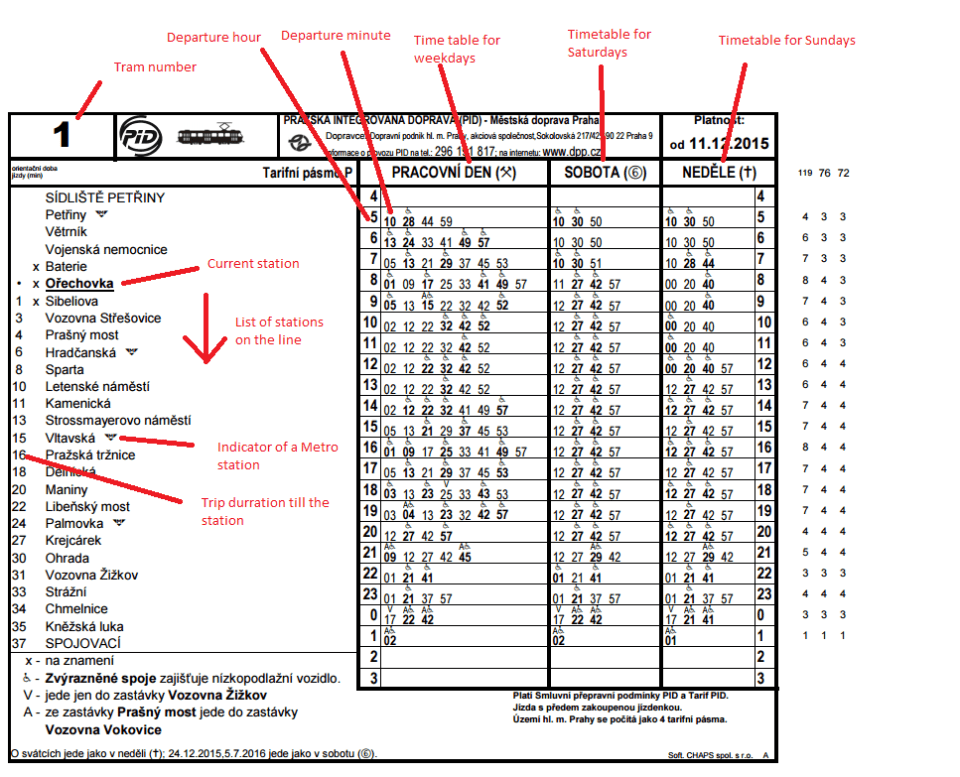How to Use Public Transportation in the Czech Republic
It's bit of a departure from my usual content, yet I think it's worth dedicating a practical post on how to navigate the public transportation system in the Czech Republic. Why? Because you'll most certainly rely on trams, buses, trains, and the metro to get around conveniently if you live in the Czech Republic. Planning to just visit Prague (Hint hint, family and friends)? There's still a good chance you'll use public transportation, especially in rainy or cold weather when walking might not be the most desirable option.
The Czech Republic is known for many things… beer, castles, dogs, Baguette Boulevard… and a very intricate transportation network that easily gets you where you need to go. And at a very inexpensive price.
Since I personally live in Prague, I'll talk mostly about moving through the city. However, I'll touch upon areas outside of Prague as well.
***Note: I converted prices from Czech Koruna to US dollars for this post at a time when 1 CZK = $.044. Please bear in mind that the prices in USD may change slightly, depending upon the current exchange rate.
For those who plan to live in Prague for an extended period of time…
You will most likely buy a pass that will give you unlimited access to all trams, metros, buses (and even a ferry ride and gondola lift!) within Prague. A yearly pass costs 3,650 CZK (roughly $161.92). That's less than 50 cents a day. Definitely worth it.
If living in Prague, but working outside of the city, you will also need to buy an additional bus or train pass for the zone you work in. These vary in price, depending on the length of time you buy your ticket for and what zone you're working in.
For instance, I take 3 forms of transportation during my 1-hour commute to and from work each day: a tram, metro, and bus. My year pass covers my tram and metro rides as they are both within Prague. However, the bus I take goes outside of Prague and into Zone 1. I need to show my second pass to my bus driver each day in order to get on this bus. For me, this second pass costs 760 CZK ($33.72) for 3 months of unlimited use.
For those who plan to live out of Prague for an extended period of time…
As long as you're not commuting into the city every day, it will probably be more economically sound to buy bus/train tickets when going into the city and then buying daily tickets or 3-day passes once in the city (see below).
For those who plan to visit Prague…
You will need to buy short-term tickets if you plan to use any forms of public transportation. You have 4 ticket options:
-A ticket valid for 30 minutes for 24 CZK ($1.06)
-A ticket valid for 90 minutes for 32 CZK ($1.42)
-A ticket valid for 24 hours for 110 CZK ($4.88)
-A ticket valid for 3 days for 310 CZK ($13.75)
Ticket machines are most commonly found in the metros, but are also scattered throughout the city as well. Be careful- while some machines accept card, most still only accept coins. The machines are only good for 30/90 minute and 24 hour tickets. If you need a 3-day ticket, you need to purchase it at a newsstand.
Your ticket will only become effective after validating your ticket at the yellow box scanner on/by your mode of transportation (not at the time of purchase!).

Once validated (you'll know because you'll see a time stamp), you can use an unlimited amount of transportation (bus, tram, and/or metro) within your allotted amount of time.
DO NOT go on transportation without a ticket! There are inspectors that do random searches. You will know that they are legit when they show you this:

If you are caught without a ticket, you will be charged 800 CZK ($35.49) on the spot.
THE METRO

Metros are located throughout all of Prague and run from 5am- 12 midnight. They are a great option to take if you don't want to wait on a tram/bus in the cold or rain. Plus, some metro stations have some pretty cool art to stare at and free metro newspapers to read (a great way to practice your Czech) as you wait.
The 'journey' to get down into the metro can also be a bit of fun: some stations have super long and steep escalators. With posters that are tilted at an angle, the ride up and down messes with your perception and becomes a bit trippy. For the first few weeks of taking the metro, I felt like Alice about to fall down/up a rabbit hole.

Oh, and one more important thing about the metro escalators- ALWAYS stay on the right hand side unless if you are passing. If not, prepare to encounter some very angry Czech people.
There are 3 metro lines: Green (the A Line), Yellow (the B Line), and Red (the C line). The metro runs pretty frequently- especially during rush-hour in the mornings and evenings. On the weekends, the metro runs less frequently. All Lines overlap towards the center of Prague, making the metro a possible way to get to almost anywhere in the city.

For those planning to live in Prague- deciding to live close to a metro opens up your possibilities of places to live within the city as it can make commuting to work much more manageable!
TRAMS

Like the metros, trams go throughout all of Prague and most stations have more than 1 tram passing through, which means connecting from one tram to another is very easy and manageable.
If you're not sure where to find a tram stop, just follow the tracks (from the sidewalk, please) and keep an eye out for a red post. This red post will list all the trams that stop at the station, as well as the times and how long it will take you to get from Point A to Point B. The tram station you are at will be underlined and all tram stops that come after will be listed in order under your stop. If you see it above, you are at the wrong stop; go across the street to the tram stop that moves in the opposite direction.
Like the metro, trams run frequent during the week and less frequent during the weekend.

Not all trams run after a certain time of night (and remember- the metro stops running at midnight). If you plan to be out late, be prepared to use the Night Trams. These operate the same way Day Trams do- only your ride may be longer and you might have to switch trams a bit more often. Night Tram numbers are shaded in black on the red posts at the tram stations.
BUSES

Buses are a bit less common to use as they mostly operate outside the city center or actually go outside of the city. However, similar to trams, they follow a particular route and timetable that can be viewed at a post at the bus stop. Some trams and buses even share the same stop.
Like trams, there are both Day and Night Buses.
Three important buses/shuttles to know about are Numbers 100, 119, and 191. These buses will take you to and from the airport and drop off/pick up at Metro Lines A or B. A super cheap and easy alternative to getting a Taxi to/from the airport.
As mentioned above, you may also take a bus to work or to see other parts of the Czech Republic. Reminder- buses that go out of Prague requires a special pass or a ticket that can be bought on the spot from the bus driver.
TRAINS
Trains are used to get in and out of Prague. While some of my fellow CIEE participants use trains to commute to/from work, I have only used the main train station (Hlavní Nádraží) to visit different towns in the Czech Republic and to travel outside the country. Tickets to different towns/countries can be bought online or in person.
So, how can you successfully travel from Point A to Point B without memorizing all metro/tram/bus/train schedules?
Easy!
Download the PID Lítačka app to your phone and simply type in your starting point and final destination. The app will do the rest and tell you what forms of transportation to take, when, and where. Six months in Prague and I still use this app when checking out new places.
And, of course, I need to recommend my favorite way of getting around- walking! Prague is a very walking-friendly city. Particularly if you want to see Prague's main attractions. Plus, you never know what you may stumble upon during your walks…

And finally I will end this post with some general 'words of wisdom' (AKA- common sense). Be respectful of the Czech Republic's transportation system. It is for public use, meaning you should behave accordingly: keep your voice down, give up your seat for elderly people, small children, and pregnant mothers, and allow people to get off of the transport before going on yourself. In other words, be courteous of others and enjoy your ride ;-)
Related Posts
What it’s like to Teach Abroad in the Czech Republic
Alumni Spotlight: Elisabeth B. After spending a year exploring historic streets and immersing herself in a new culture, Portland, Maine native Elisabeth Brewington returned home from teaching English in the... keep reading
Teach English in the Czech Republic
The Destination Placed right in the heart of Europe, Czech Republic is a unique destination known for its food and drink, bohemian lifestyle, and medieval architecture. It’s a great place... keep reading
Receiving my Acceptance Letter & The Process Leading up to Departure!
It has now been a year since I turned in my application to teach in the Czech Republic, but it seems like just yesterday. I remember frantically checking my email... keep reading



